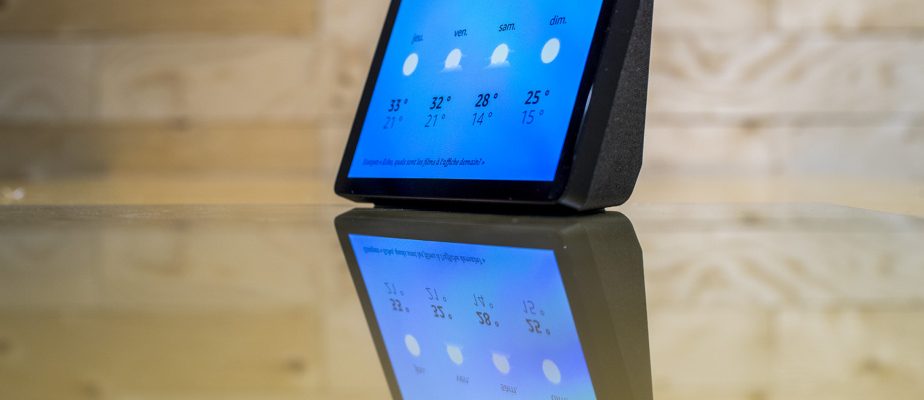It’s been more than three years since Google introduced its latest smart speaker, the Nest Audio. In November 2022, Amazon announced the elimination of 10,000 positions and reported losses estimated at US$10 billion, largely due to its Alexa division and its Echos sold at cost price. And aside from a small update in January 2023, Apple is no longer touting its expensive HomePod speaker.

PHOTO JASON HENRY, THE NEW YORK TIMES ARCHIVES
Apple Homepod, Google Home and Amazon Alexa
These manufacturers, without a doubt, are aware of the most recent sales statistics for these devices which had their heyday between 2014 and 2020.
A market that is “peaking out”
As can be seen in the table below, sales are stagnating or declining for the two main North American manufacturers, Google and Amazon. Apple is experiencing modest growth, but remains a second-tier player. It is mainly Chinese companies, particularly Xiaomi, Baidu and Ali Baba, which have taken over.

“After a period of rapid growth, the smart speaker market decelerated in 2020 and 2021,” noted Elizabeth Parks, president of Parks Associates, a technology marketing research firm, in a report published last May.
The novelty of voice assistants faded when the technology became integrated into many other everyday consumer products like headphones, smart watches and remote controls.
Elizabeth Parks, President of Parks Associates
In Quebec, in 2023 we noted the first drop in the adoption rate of smart speakers since the Academy of Digital Transformation (ATN) compiled this data, i.e. for six years.

What is a smart speaker?
Also called “smart speaker” in French, translation of the English term smart speaker, the smart speaker is essentially a speaker to which a microphone has been attached which allows you to interact with a voice assistant. Although various prototypes have been launched since the 1980s, it is to Amazon that we owe the takeoff of this category of devices from 2014 with its Echo. According to a 2021 U.S. Comscore survey, the top usage, at 31%, is to get answers to general questions – math calculations, history, definitions. And 27% use it for information on the weather or sports scores, 25% to play music, 22% for timers or alarms and 19%, for home automation control.
The NETrends 2023 report echoes a more general observation: “The smart speaker market, which was once growing strongly, could be plateauing in the United States. [En] By 2023, 36% of Americans aged 12 and over will report owning such devices. This percentage represents a small increase from 35% in 2022 and 33% in 2021.”
Rebound and distrust
It’s difficult to announce the death of a device that has nevertheless found its way to 36% of Americans and 24% of Quebecers. In fact, according to Adam Wright, research coordinator at the IDC firm quoted by TechBrew, “the market is entering a period of correction”. “The sheer volume of smart speakers sold over the last three or four years means we have reached a saturation point,” he says. Most households that would be interested in one of these speakers already own at least one, if not two, three, four or five. »

PHOTO PROVIDED BY AMAZON
Amazon Echo
Temporary pause or decline, it is however obvious that these devices have been facing headwinds for several years. At the forefront: distrust of these artificial intelligences that are always listening, but which theoretically only send data to the servers when they hear the trigger like “Alexa” or “OK Google”.

PHOTO PROVIDED BY GOOGLE
The Google Nest Mini has the essential features of the Google Home Mini, its small size and low price.
Consumers are not convinced. A Statistics Canada survey published last July revealed that 40% of Canadians did not trust them. Several controversies have left their mark, notably the fact revealed in 2019 that Amazon and Google used the services of human operators to transcribe – and therefore listen to – part of the conversations recorded by their smart speakers.
In July 2020, a team of researchers from Northeastern University in the United States demonstrated that these speakers tend to record snippets of conversations by mistake, sometimes several times an hour.
Stalled for evolution
The other criticism that we often make of these devices, especially in the media specialized in technology, is that they have evolved very little in almost a decade, apart from the addition of a screen to some models. From a sound point of view, apart from a few rare attempts to improve them – a path that Google has buried with its defunct Google Home Max – they most often remain small, not very immersive speakers.

PHOTO PROVIDED BY APPLE
Apple HomePod
Perhaps even more damaging from a technological point of view, the use of voice assistants in which millions of commands have been received now pales in comparison to generative artificial intelligence like ChatGPT.
As soon as you want to perform sensitive tasks, requiring multiple interactions or of a multimodal nature, voice assistants are no longer reliable.
Ben Dickson, author of the TechTalks site
Google and Amazon have their own generative artificial intelligence in store that could close the gap, but no plans to do so have yet been announced. Obviously, smart speakers have allowed their manufacturers to accumulate data and conversations to train their models.
But direct monetization has so far failed, as Amazon’s financial losses have illustrated. The American e-commerce giant has never managed to convince a significant portion of Echo users to use it for online purchases. Official statistics have never been revealed, but a survey by The Information media revealed in 2018 that barely 2% of users had used their Echo to shop, and that only 10% of these had started the experience again.
